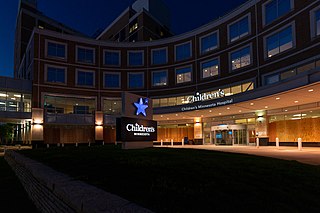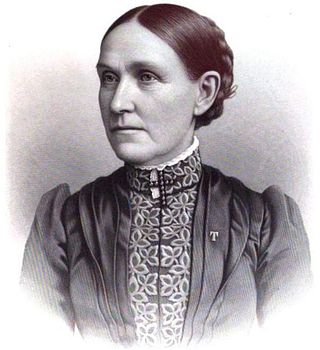
Cleveland Clinic is a nonprofit American academic medical center based in Cleveland, Ohio. Owned and operated by the Cleveland Clinic Foundation, an Ohio nonprofit corporation established in 1921, it runs a 170-acre campus in Cleveland, as well as 11 affiliated hospitals, 19 family health centers in Northeast Ohio, and hospitals in Florida and Nevada. International operations include the Cleveland Clinic Abu Dhabi hospital in the United Arab Emirates and Cleveland Clinic Canada, which has two executive health and sports medicine clinics in Toronto. Another hospital campus in the United Kingdom, Cleveland Clinic London, opened to outpatients in 2021 and fully opened in 2022. Tomislav Mihaljevic is the president and CEO.

Epworth HealthCare is a provider of acute medical, surgical and rehabilitation services in Melbourne, Australia. The group has four divisions: Epworth Richmond, Epworth Eastern, Epworth Cliveden, Epworth Freemasons and Epworth Geelong Epworth Rehabilitation, with rehabilitation sites at Richmond, Camberwell, Brighton and Geelong, Victoria. With over 1,200 beds and more than 4,000 staff, Epworth HealthCare is Victoria's largest not-for-profit private hospital group.

Allina Health is a not-for-profit health care system based in Minneapolis, Minnesota, United States. It owns or operates 12 hospitals and more than 90 clinics throughout Minnesota and western Wisconsin. Its subsidiary, Allina Medical Transportation, covers eight regions and over 80 communities providing medical dispatch, 911 pre-arrival instructions, and emergency and non-emergency ambulance service.
John Muir Health is a hospital network headquartered in Walnut Creek, California and serving Contra Costa County, California and surrounding communities. It was formed in 1997 from the merger of John Muir Medical Center and Mount Diablo Medical Center.

Midtown Phillips is a neighborhood within the Phillips community in Minneapolis. Its boundaries are East 24th Street to the north, Bloomington Avenue to the east, East Lake Street to the south, and Chicago Avenue to the west.

Children's Minnesota is a nationally ranked non-profit, acute care children's hospital system located in St. Paul and Minneapolis, Minnesota. The hospital has 384 pediatric beds between their campuses. Children's Minnesota provides comprehensive pediatric specialties and subspecialties to infants, children, teens, and young adults aged 0–21 throughout Minnesota and surrounding regions and sometimes also treats adults that require pediatric care. Children's Minnesota Minneapolis features an American College of Surgeons verified Level 1 Pediatric Trauma Center, 1 of 4 in the state. In addition to its two hospitals, Children's Minnesota has 12 primary and specialty care clinics, and six rehabilitation sites representing more than 60 pediatric specialties.

Northwestern Lake Forest Hospital (NLFH) is a community-based hospital in Lake Forest, Illinois and a wholly owned subsidiary of Northwestern Memorial HealthCare, one of the nation's premiere academic medical centers. The hospital was established in 1899 as Alice Home on the campus of Lake Forest College, and in 1942 a new hospital was built in its current location as Lake Forest Hospital. On February 1, 2010, Lake Forest Hospital completed an affiliation agreement with Northwestern Memorial HealthCare and became Northwestern Lake Forest Hospital.
PIH Health Good Samaritan Hospital is a hospital in Los Angeles, California. The hospital has 408 beds. In 2019 Good Samaritan joined the PIH Health network.
St. Cloud Hospital is a hospital in St. Cloud, Minnesota, United States. It is a Catholic-affiliated, not-for-profit institution and part of the CentraCare Health System. The hospital has more than 9,000 employees, 400 physicians and 1,200 volunteers. It serves 690,000 people in a 12-county area.

Harriet Granger Hulet Walker was an American hospital administrator and leader in the temperance movement.
Newark Beth Israel Medical Center (NBIMC), previously Newark Beth Israel Hospital, is a 665-bed quaternary care, teaching hospital located in Newark, New Jersey serving the healthcare needs for Newark and the Northern Jersey area. The hospital is owned by the RWJBarnabas Health System and is the third largest hospital in the system. NBIMC is affiliated with the New Jersey Medical School of Rutgers University and features over 100 residents. It has an adult and pediatric emergency department, but serious trauma is usually handled by the nearby University Hospital. Attached to the medical center is the Children's Hospital of New Jersey, which treats infants and young people up to age 21.
Owatonna Hospital is a non-profit regional medical center in Owatonna, Minnesota, United States that serves patients in and around Steele County, Minnesota. Owatonna Hospital provides a full range of inpatient, outpatient and emergency care services, as well as home and palliative care and hospice. It is owned by Allina Health System of Minneapolis.
Medical centers in the United States are conglomerations of health care facilities including hospitals and research facilities that also either include or are closely affiliated with a medical school. Although the term medical center is sometimes loosely used to refer to any concentration of health care providers including local clinics and individual hospital buildings, the term academic medical center more specifically refers to larger facilities or groups of facilities that include a full spectrum of health services, medical education, and medical research.

Abbott Hospital is a former hospital building in the Stevens Square neighborhood of Minneapolis, Minnesota, United States. The hospital was originally built in 1910, with several additions up until 1958. The hospital eventually merged with Northwestern Hospital in 1970 to form Abbott Northwestern Hospital, and the Abbott Hospital building closed in 1980.
The Courage Kenny Rehabilitation Institute is a rehabilitation medicine institute in Minneapolis, United States.

William Hood Dunwoody was an American banker, miller, art patron and philanthropist. He was a partner in what is today General Mills and for thirty years a leader of Northwestern National Bank, today's Wells Fargo.

The Minneapolis Veterans Affairs Health Care System (VAHCS) is network of hospital and outpatient clinics based in Minneapolis, Minnesota, USA. It belongs to the VISN23 VA Midwest Health Care Network managed by the Veterans Health Administration of the Department of Veterans Affairs. The Minneapolis VAHCS provides healthcare for United States military veterans in areas such as medicine, surgery, psychiatry, physical medicine and rehabilitation, neurology, oncology, dentistry, geriatrics and extended care. As a teaching hospital, it operates comprehensive training programs for multiple treatment specialties. The Minneapolis VAHCS also hosts one of the largest research programs of any VA health care system and maintains research affiliations with the University of Minnesota.

Louise M. Powell (1871–1943) was an American nurse and educator who led the University of Minnesota School of Nursing, during its formative years. During her tenure there (1910–1924), the university established a five-year baccalaureate nursing degree program. In honor of her achievements, the nurses residence hall was named for her in 1939. She was later dean of nursing at Western Reserve University.












